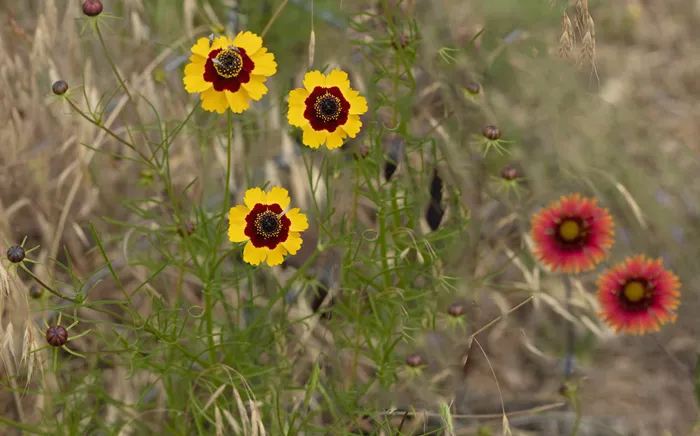Wildflower seedlings are the tender beginnings of nature’s colorful tapestry, often appearing as delicate rosettes or tiny shoots that hint at the vibrant blooms to come. Recognizing these seedlings can be a delightful challenge for gardeners eager to nurture native plants and create naturalistic landscapes. This article explores what wildflower seedlings look like, how to identify them among weeds, and tips for successful cultivation, all in a fresh, pastoral style that brings the garden to life.
Understanding Wildflower Seedlings: A Gentle Introduction
Wildflower seedlings typically emerge in early spring or late fall, depending on the species and local climate. They start as small, often low-lying clusters of leaves, known as basal rosettes, which lie close to the soil. These seedlings vary widely in appearance, but most share some common traits: soft, tender leaves that may be hairy or smooth, simple or lobed shapes, and a subtle green hue that blends with their surroundings.
For example, the California Poppy (Eschscholzia californica) seedling features finely divided, bluish-green leaves that are slender and delicate, while the Texas Bluebonnet (Lupinus texensis) seedling is identifiable by its unique palmate leaf shape, resembling a tiny hand with fingers spread. Other seedlings, like the Mexican Hat (Ratibida columnifera), show feathery leaves, making them easier to distinguish from common weeds.
Common Characteristics of Wildflower Seedlings
Leaf Shape and Arrangement: Wildflower seedlings often have simple or compound leaves. Some, like Coreopsis species, have lance-shaped or deeply lobed leaves, while others may have rounded or toothed edges. Leaf arrangement can be alternate, opposite, or whorled along the stem.
Texture: Seedlings may have hairy or smooth leaves and stems. For instance, Firewheel (Gaillardia pulchella) seedlings have slightly hairy leaves with lobed margins, whereas Black-Eyed Susan (Rudbeckia hirta) seedlings have hairy but non-lobed elliptic leaves.
Size and Growth Habit: Most wildflower seedlings are small, ranging from a few millimeters to a couple of inches tall in their early stages. They often form a rosette close to the ground before sending up flowering stems.
Color: Seedlings are predominantly green but can have bluish or grayish tints depending on the species and environmental conditions.
Distinguishing Wildflower Seedlings from Weeds
One of the challenges in growing wildflowers is differentiating seedlings from weeds, especially since many wildflower seedlings resemble common weed species in their early stages. Accurate identification is important to avoid accidentally pulling out desirable plants.
Look for Unique Leaf Patterns: Some wildflower seedlings have distinctive leaf shapes or vein patterns. For example, the Cutleaf Daisy (Engelmannia peristenia) has a thick white vein running through its leaves, a helpful identification marker.
Check for Hairiness or Prickles: The White Prickly Poppy (Argemone albiflora) is easy to spot due to its prickly basal rosette, which is uncommon in most weeds.
Consider Growth Timing: Many wildflowers germinate at specific times of the year. Texas Bluebonnets, for example, start their rosettes in December, which can help distinguish them from weeds that emerge later.
Use Seedling Identification Guides: Resources listing seedlings alongside their mature flowers can be invaluable. Some native plant groups and seed suppliers provide detailed images and descriptions to help gardeners identify seedlings correctly.
Tips for Growing Wildflower Seedlings Successfully
Site Preparation: Choose a sunny, open area with well-drained soil. Remove existing weeds thoroughly to reduce competition for young seedlings.
Seed Planting: Scatter seeds evenly, aiming for about 5 grams per square meter, then lightly rake to ensure seed-to-soil contact. Protect seeds from birds with netting if necessary.
Watering: Keep the soil moist but not waterlogged until seedlings are established.
Weeding: Remove unwanted weed seedlings carefully to avoid disturbing wildflower roots. Early weeding is easier and supports healthy wildflower growth.
Patience: Some wildflower seeds require cold stratification or specific conditions to germinate, so don’t be discouraged if seedlings take time to appear.
Conclusion
Wildflower seedlings are the humble yet hopeful beginnings of a vibrant garden that supports wildlife and brings natural beauty to any space. Learning to recognize their unique leaf shapes, textures, and growth habits helps gardeners nurture these plants from tiny rosettes into flourishing blooms. With thoughtful site preparation, careful planting, and a bit of patience, anyone can cultivate a thriving wildflower meadow that delights the senses and sustains the environment.
Embracing the subtle charm of wildflower seedlings connects us to the rhythms of nature and the joy of watching life unfold from the smallest green shoots to radiant blossoms. Happy gardening!


